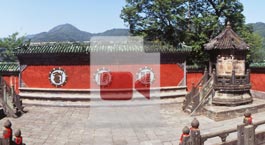Northern cities to get diverted water
By Jin Zhu ( China Daily )
Updated: 2012-11-28
Water will be supplied to drought-prone cities in North China in the third quarter of next year via the eastern route of the South-to-North Water Diversion Project, authorities said.
The first phase of the project's eastern route is expected to be completed by the end of March 2013, and the water quality of all monitored cross sections along the route will meet mandatory standards by the end of June 2013, according to the State Council's Office of the South-to-North Water Diversion Project Commission.
The project, the world's largest water diversion, is designed to take water from the Yangtze River in the south via eastern, middle, and western routes to satisfy the water demand in the arid northern region of China.
The eastern route will divert water from Jiangdu, Jiangsu province, on the Yangtze River into Shandong province along the Beijing-Hangzhou Grand Canal.
Sun Yifu, deputy director of the Water Resources Department of Shandong province, said the first phase of the project's eastern route will transfer an average of 1.5 billion cubic meters of water to the province a year.
"At present, the annual water shortage in Shandong remains at about 4 billion to 5 billion cubic meters. The water diversion project will greatly relieve the thirsty," he said.
The diverted water will be used mainly to satisfy the increasing demand of urban residents and industry development, he said.
"Guaranteeing water quality is the key to success in the eastern route as years of industrial pollution in the surrounding areas led to severe contamination of water," said E Jingping, head of the South-to-North Water Diversion Project office.
Tests in October found water quality of the eastern route's trunk canals is at least Grade III, the minimum standard for drinking-water sources, according to the office.
Also, 97 percent of monitored cross sections along the eastern route met mandatory water quality standards during the same period.
The great improvement in water quality was attributed to "strict and effective" measures on curbing pollution, E said.
For instance, thousands of polluting paper mills and alcoholic-beverage factories have been shut down since the construction began on the eastern route in 2002.
Also, key pollution-control facilities, such as man-made wetlands, which can help purify urban waste water, and pipelines linking urban sewage treatment plants have been built.
China had invested 213.4 billion yuan ($34.3 billion) to the first phase of the project's eastern and middle routes as of October,, according to the project office.
The middle route will supply water from the Danjiangkou Reservoir in Hubei province to northern cities, including Beijing, Tianjin, Shijiazhuang and Zhengzhou, in 2014.



